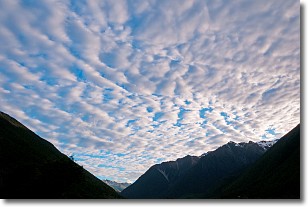Weather Alert in Texas
Flood Warning issued June 30 at 8:10AM CDT until July 1 at 4:14AM CDT by NWS Midland/Odessa TX
AREAS AFFECTED: Brewster, TX
DESCRIPTION: ...The Flood Warning continues for the following rivers in Texas... Rio Grande at Rio Grande at Johnson Ranch near Castolon, Texas affecting Brewster County. For the Rio Grande...including Rio Grande at Johnson Ranch near Castolon, Texas, Rio Grande at Rio Grande Village, BBNP, Texas... Moderate flooding is forecast. * WHAT...Moderate flooding is occurring and moderate flooding is forecast. * WHERE...Rio Grande at Rio Grande at Johnson Ranch near Castolon, Texas. * WHEN...Until late tonight. * IMPACTS...At 12.0 feet (3.7 meters), the river reaches bankfull, minor lowland flooding occurs, and no significant damage is expected. At 15.0 feet (4.6 meters), flood stage is reached. Moderate lowland flooding begins. Roads that lead to Cottonwood Campground and River Road may flood. Stages are practically synonymous with the gage at Cottonwood Campground at Castolon (CSTT2), and therefore represent the reach from Santa Elena Canyon through Cottonwood Campground, where damage may occur. Cattle also graze in the lowlands, and may be threatened. At 19.0 feet (5.8 meters), the river reaches major flood stage. Flooding begins to occur upstream in Cottonwood Campground at Castolon, as stages at each location are practically synonymous. Moderate lowland flooding begins at the gage site, but no damage occurs. The gage is inaccessible, as River Road is impassable at several locations. * ADDITIONAL DETAILS... - At 7:15 AM CDT Monday the stage was 17.2 feet (5.2 meters). - Bankfull stage is 12.0 feet (3.7 meters). - Recent Activity...The maximum river stage in the 24 hours ending at 7:15 AM CDT Monday was 17.2 feet (5.2 meters). - Forecast...The river is expected to rise to a crest of 17.7 feet (5.4 meters) late this morning. It will then fall below flood stage late this afternoon. - Flood stage is 15.0 feet (4.6 meters). - Flood History...This crest compares to a previous crest of 18.5 feet (5.6 meters) on 09/03/2024. - http://www.weather.gov/safety/flood
INSTRUCTION: Caution is urged when walking near riverbanks. Please report observed flooding to local emergency services or law enforcement and request they pass this information to the National Weather Service when you can do so safely. Additional information is available at www.weather.gov. The next statement will be issued this evening at 815 PM CDT.
Want more detail? Get the Complete 7 Day and Night Detailed Forecast!
Current U.S. National Radar--Current
The Current National Weather Radar is shown below with a UTC Time (subtract 5 hours from UTC to get Eastern Time).

National Weather Forecast--Current
The Current National Weather Forecast and National Weather Map are shown below.

National Weather Forecast for Tomorrow
Tomorrow National Weather Forecast and Tomorrow National Weather Map are show below.

North America Water Vapor (Moisture)
This map shows recent moisture content over North America. Bright and colored areas show high moisture (ie, clouds); brown indicates very little moisture present; black indicates no moisture.

Weather Topic: What are Stratus Clouds?
Home - Education - Cloud Types - Stratus Clouds
 Next Topic: Wall Clouds
Next Topic: Wall Clouds
Stratus clouds are similar to altostratus clouds, but form at a
lower altitude and are identified by their fog-like appearance, lacking the
distinguishing features of most clouds.
Stratus clouds are wider than most clouds, and their base has a smooth, uniform
look which is lighter in color than a nimbostratus cloud.
The presence of a stratus cloud indicates the possibility of minor precipitation,
such as drizzle, but heavier precipitation does not typically arrive in the form
of a stratus cloud.
Next Topic: Wall Clouds
Weather Topic: What are Altocumulus Clouds?
Home - Education - Cloud Types - Altocumulus Clouds
 Next Topic: Altostratus Clouds
Next Topic: Altostratus Clouds
Similar to cirrocumulus clouds, altocumulus clouds are
characterized by cloud patches. They are distinguished by larger cloudlets
than cirrocumulus clouds but are still smaller than stratocumulus clouds.
Altocumulus clouds most commonly form in middle altitudes (between 2 and 5 km)
and may resemble, at times, the shape of a flying saucer.
These uncommon formations, called altocumulus lenticularis, are created by uplift
in the atmosphere and are most often seen in close proximity to mountains.
Next Topic: Altostratus Clouds
Current conditions powered by WeatherAPI.com




